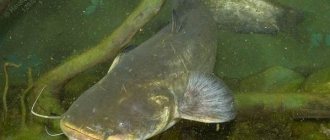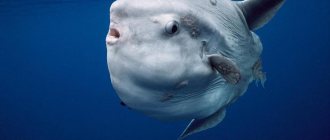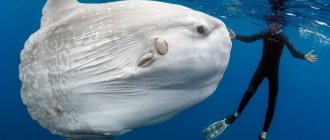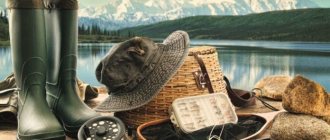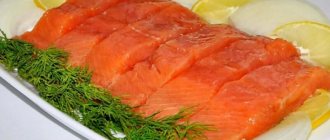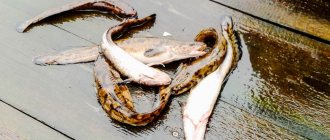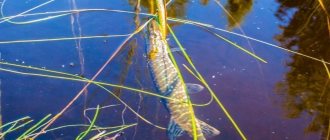River perch
A predatory fish of the perch family, growing on average up to 15-20 cm. The size of individuals depends on the habitat, the largest reach a length of 50 cm and weigh more than 2 kg. The body of the fish is compressed on the sides, covered with small scales. Its snout is blunt and there is a small hump behind its head. The main color is yellow-green with black transverse stripes on the sides, while the belly is white. River perch lives in lakes, rivers, reservoirs and ponds, and can also be found in brackish waters. It feeds mainly on other fish.
List of the most popular representatives of river fish
Zander
This predatory fish prefers to stay in schools and is distinguished by its characteristic coloring: 8-10 vertical stripes on both sides. Pike perch has an oblong body and can reach quite large sizes. Thus, some individuals grow to 7-10 kilograms or more, especially in large rivers.
This fish loves spacious reservoirs saturated with oxygen, but it does not like muddy rivers overgrown with grass. Adult pike perch prefers to stay in holes, near stones at depth, going out into shallow water only during the breeding season or for hunting. But young animals, on the contrary, love shallow sections of the river.
This strong fish is quite voracious. Pike perch spawns when the water temperature reaches at least 17 degrees, and lays several hundred thousand eggs, after which it itself protects them from other predators. Fishermen, both amateur and commercial, value this fish very much for its tasty meat, which contains few bones.
Bersh
The appearance of this fish is similar to pike perch, but the bersh reaches a smaller size. Bersh grows in length to about fifty centimeters.
This schooling predator prefers the lower reaches of rivers, where there is a sandy, pebble bottom, or stones, as a habitat. It spawns at temperatures not lower than 15 degrees. The bersha's diet consists of insects, crustaceans, worms, and small fish.
Perch
This beautiful fish has a laterally compressed body, a characteristic hump and five to eight dark stripes on the sides, as well as orange eyes, fins and a tail.
It is noteworthy that the color of the perch directly depends on how clear the river water is. So, if the water is clear, then the perches living in it are lighter in color than their counterparts living in reservoirs with a muddy bottom and dark-colored water.
This fish is common in many rivers, both small and large, preferring to live in the quietest places.
This is a predator that prefers to live in schools and feeds on small fish, worms, larvae and small crustaceans. Perch prefers cool water; spawning occurs at a water temperature of 7 degrees, when the fish reaches the age of two to three years.
Ruff
This is a fish with an elongated body, widespread in rivers, otherwise known among fishermen as a “thorn”. It is necessary to handle it with great care, as you can seriously prick yourself on the sharp thorns.
This fish is small in size - the ruff grows up to thirty centimeters in length, and weighs up to 150-200 grams. Ruff is caught by fishermen quite often, although it does not provide much commercial benefit. It’s not for nothing that they say: “You can’t cook fish soup from a ruff.”
This fish lives in schools and loves places in the river with a muddy bottom and a small current. The diet of the ruffe includes larvae and worms. It also eats eggs, causing harm to other fish. At the same time, the ruffe itself rarely becomes prey for predators due to its spines.
The breeding season for this fish begins in April and ends in June. The fish spawns in very large quantities, several tens of thousands of eggs, and in portions, after which the eggs are attached to the stones at the bottom of the river with the help of mucus.
You can catch ruffe on bread, and anglers note that if this fish grabs the bait, it most likely will not let it go.
Chop
This fish has a sedentary lifestyle. It can be found, for example, in the Dnieper or Danube rivers, where the chop chooses to live in places with a fairly fast flow and the presence of a large number of holes.
Chop's diet: larvae, worms, young fish. This fish can grow up to 50 centimeters in length and weigh one kilogram. According to fishermen, they encounter this fish only occasionally.
Pike
This predator, popular in our rivers, has an elongated body and a stature full of sharp teeth. She loves quiet and deep places and prefers to swim alone. During hunting, pike stay in holes, behind snags and stones, or in thickets of algae.
The diet of pike includes small fish, and it can even eat young fish of its own species. This predator can also feed on worms and larvae, and can also attack birds landing on the water surface. Pike can grow to enormous sizes - up to 50 centimeters in length and 40 kilograms in weight.
Pike spawning occurs in the spring, at a water temperature of plus 4-6 degrees, and it can begin even when there is still ice on the reservoirs. You can fish for this predator all year round; it bites especially better on the eve of spawning or immediately after it, as well as in the fall.
Roach
Roach is a schooling fish. It has a silver body compressed on the sides and red-orange fins.
This fish can be found in almost all rivers in large numbers. She prefers to stay not at the very bottom, in quiet areas overgrown with grass, where she can hide from predators.
The roach is quite unpretentious, it does not like cold water, its diet includes larvae, worms, fish eggs, mollusks, small crustaceans, and even plants. Roaches are usually small in size, ranging from fifteen to twenty centimeters, but individual individuals can reach a length of almost half a meter and a weight of one and a half to two kilograms (however, such specimens are quite rare).
Spawning of this fish occurs at a water temperature of plus 10 degrees. Fishing for roach can take place all year round, and it is better to choose the time for fishing early in the morning or late in the evening. The most successful bite is observed immediately after spawning. In the dead of winter, roaches, gathered in schools, hide in holes, not showing much activity.
Bream
This schooling fish lives mainly in quiet places with calm currents and muddy bottoms, and can live in the same place for a long time.
This is a fairly large fish that can reach a weight of five kilograms and a length of 50 centimeters. The diet of bream consists of mollusks, crustaceans, larvae, worms, and algae.
Bream spawning occurs at temperatures ranging from plus 13 degrees, and this fish lays numerous eggs (on average 120-140 thousand) in the shallows.
Gustera
This fish is a distant relative of the bream and prefers to live in a school. It has a flattened silver body and reddish fins. This river inhabitant grows up to 30 centimeters and also reaches a weight of 0.5 kilograms.
It can be found both in the depths of rivers and in shallow places, as well as in grassy thickets of a pond. The silver bream prefers to feed on larvae, worms, algae, and small crustaceans.
Spawning of this fish occurs at a water temperature of at least 16 degrees and lasts for each individual for three to four days. On average, a silver bream lays about 100 thousand eggs.
Carp
Carp is a schooling fish that lives in places with slow currents, where there are many holes and snags. Its diet includes worms, larvae, plants, and mollusks.
Carp is the largest representative of carp living in our rivers. Particularly large individuals of carp can grow up to 1 meter and weigh 20 kilograms.
Carp
Carp, which is a desirable prey for most fishermen, loves to live in the depths and is one of the longest-livers among fish: according to some data, some individuals of carp lived up to a hundred years and gained a mass of 10 kilograms.
This fish is very prolific and loves warmth.
Among the carps there are:
- scaly,
- mirror,
- framed,
- naked and others.
All these representatives differ from each other in habits, as well as in the shape of the body and scales.
crucian carp
There are golden and silver crucian carp. This is a fairly unpretentious fish that prefers shallow places in rivers, warmed by the sun’s rays and overgrown with various vegetation.
It is noteworthy that there are reservoirs where no other fish live - only crucian carp, some of which reach a mass of 3 kilograms. The diet of crucian carp includes zooplankton, plants, larvae, and worms.
Spawning of crucian carp occurs when the water temperature exceeds plus 15 degrees. The most active fishing for crucian carp occurs in the warm season.
Tench
This is a slow (one might even say lazy) fish with a fairly thick body that loves quiet water.
Tenches are usually solitary, love to be among aquatic vegetation and spend a long time in one place.
In case of danger, the line buries itself in the muddy bottom. The tench's diet includes mollusks, plants, and larvae.
Some representatives of this fish can grow up to sixty centimeters, while tench grows slowly throughout their life.
It spawns in warm water, no lower than 20 degrees, and usually lays a large number of eggs - over 100 thousand. Fishermen note that tench bite very hesitantly and are little active in winter.
Chub
Chub live in schools and love cool water and rocky bottoms. It feeds on larvae and flying insects, and can jump out of the water to catch them.
Usually this is a small fish, but some specimens reach a length of 70-80 centimeters and a weight of eight kilograms.
Chub spawning occurs in March and April, and this fish lays eggs of very small sizes, but in large quantities.
Ide
This fish lives in schools and loves quiet water with a pebble or sandy bottom. She is usually active at night. The ide diet includes flying insects, mollusks, worms, and larvae.
Yazzies can grow to quite large sizes and weigh up to eight kilograms. Spawning of ide occurs in cool water; each female lays an average of about 70 thousand eggs.
Asp
These predators love places in rivers with muddy currents. The asp feeds mainly on small fish, and hunts in the following way: it rushes at speed into a school of fish, for example, bleaks or chubs, grabbing them.
The asp can grow quite large - up to 80 centimeters in length and weighing over 10 kilograms. This fish spawns in cool water; females lay about 100 thousand eggs at a time.
Chekhon
This schooling fish loves quiet places with clean water and no algae. During the day it usually floats on the surface, and at night it goes to the bottom. Basically, the size of this fish is small, and individual specimens of sabrefish can reach a length of 70 centimeters and a weight of more than a kilogram.
Chekhon spawning occurs in fairly cool water; the female lays about 100 thousand eggs at a time. At the same time, there is an interesting feature: the eggs are carried downstream, where the young are hatched.
Rudd
This fish got its name for its beautiful appearance: the rudd has red-crimson fins, and its body itself has a golden tint. When a fisherman pulls a rudd out of the water, the fish sparkles so much in the sun that it resembles a fairy-tale goldfish.
This fish lives in schools and looks like a roach. It is usually quite small in size, although individual specimens can grow up to 40 centimeters in length and weigh one and a half kilograms.
The best habitats for rudd are quiet backwaters, where there is a lot of grass, algae and reeds. In case of hot weather, the rudd rises to the surface of the river and basks in the sun.
The rudd's diet includes algae, insects, their larvae, and worms.
Spawning of this fish occurs at a water temperature of plus 18 degrees, and, on the eve of the start of the reproduction process, the fish becomes covered with a granular rash. During spawning, the female lays about 100 thousand eggs, but most of them are not destined to turn into fry.
The best fishing for rudd occurs on summer mornings, as well as during winter thaws.
Podust
This bottom-dwelling fish loves places with strong currents and prefers to flock into large schools of several hundred individuals.
Usually the podusts are not large, but some individuals grow up to a kilogram in weight and half a meter in length.
They prefer to feed on various plant foods, as well as worms and larvae. He can also eat the eggs of other fish, for example, asp (this usually happens during spawning).
Podust loves cool water and spawns at a water temperature of plus 6 degrees.
Podust eggs are white and quite large, and the female of this fish can lay an average of 70 to 100 thousand eggs.
You can fish for podust in the summer, and the best time of day is morning and evening. According to fishermen, the best bite occurs during the flowering of yellow acacia. This fish overwinters in the depths, looking for holes and becoming active only closer to spring.
Bleak
This schooling fish has a laterally compressed body and a greenish-silver, very sparkling color.
Bleaks love quiet places in reservoirs, staying near bridges or steep, steep banks, mostly close to the surface.
She is omnivorous, so you can fish for bleak using any bait. She also eats insects, worms, and fish eggs. The bleak itself often becomes food for predatory fish.
The bleak is usually small, on average it grows to 15-20 centimeters.
Spawning of this fish occurs above plus 15 degrees. She lays eggs on grass or pebbles, and within a week young fish emerge from the eggs.
It is better to catch bleak in summer, or late winter-early spring.
Bystryanka
Bystryanka is very similar to bleak - the difference is a dark dotted line located on the sides of the fish, and a shorter body. She prefers to stay in flocks and loves places with fairly fast currents.
Bystryanka is a small fish. Its length usually does not exceed 10-12 centimeters.
During spawning, female bystrians hide their eggs in pebbles and plants at the bottom. Moreover, the number of eggs can be huge, sometimes weighing as much as the fish itself.
Gudgeon
Minnows usually live in schools and prefer to live in rivers in shallow water, choosing areas with a sandy or rocky bottom.
The diet of minnows includes worms, mollusks, and larvae.
This is a daytime fish that cannot be caught at night. It is better to catch it in the summer, since in winter the gudgeon goes deeper.
Gudgeon spawning usually occurs in the second half of spring at shallow depths. Numerous females noisily lay bluish eggs in driftwood, grass or pebbles. In this case, part of the eggs is eaten by the minnows themselves.
white cupid
This school-living fish has an elongated body, greenish-gray or yellow-gray in color. Grass carp lives mainly in the river of the same name in Siberia, choosing places with slow flows and large vegetation. This fish is herbivorous.
Cupids can grow large in size: up to a weight of thirty kilograms and a length of 1.2 meters. This fish shows great caution, so you need to be quiet when fishing for it. Cupid is caught using semolina, dough, peas, and potatoes. When playing, the cupid exhibits active resistance, so you need to make a lot of effort to pull it out of the water.
This fish loves warm water and spawns at temperatures not lower than plus 26 degrees.
Also found in rivers is black carp, which has a characteristic color: a dark body on the back and sides and black fins.
Silver carp
Silver carp lives in schools, lives in the Amur River basin, and is a commercial fish classified as valuable. Silver carp can grow up to one meter in length and weigh up to 20 kilograms.
This fish lives in quiet places, where there is little current and a lot of algae, and feeds mainly on zooplankton.
Silver carp spawning occurs at water temperatures of plus 20 degrees and in places with current.
Fishing for it will be successful in the summer when using plant baits, such as clover, or dough. However, it is worth remembering that the silver carp is very careful. Silver carp hibernates at depth, falling into deep sleep.
Som
This predator, standing apart from other river inhabitants, can grow to truly enormous sizes: more than five meters in length and weighing about 300 kilograms.
Catfish is a solitary fish, loves places with clean and warm water and constantly stays at depth, next to holes, snags and reed thickets.
It feeds on shellfish, other fish (including dead fish), frogs and even birds.
Catfish spawning occurs at temperatures above 20 degrees. A catfish that has reached the age of 3-4 years lays eggs in a specially dug nest, and protects the emerging fry from other fish.
Fishing for catfish can be successful all summer, and it is worth remembering that this is a nocturnal predator.
Channel catfish
The channel catfish is an elongated-bodied predator, distributed primarily in North America.
The largest specimens of channel catfish can grow up to 40-45 kilograms and a length of more than 1.5 meters.
This fish loves quiet backwaters, where there are many holes, snags, and also near covered, steep banks.
The diet of channel catfish includes small fish, crustaceans, mollusks, worms, and larvae. You can catch it with a spinner, with live bait, and even with a piece of laundry soap, using a donkey or a float rod.
Spawning of channel catfish occurs at water temperatures above plus 22 degrees, and after the eggs are laid, they are guarded by the male.
Acne
This predator has a unique appearance: the eel has a wriggling, elongated body that resembles a snake.
Habitat of the eel: the basins of the Baltic, as well as the Azov, Black and White Seas.
Interestingly, the eel can crawl through moisture-saturated grass - thus it can move from one body of water to another.
This fish lives mainly in places with weak currents and prefers the bottom where there are snags and grass. It feasts on larvae, frogs, and mollusks.
Another interesting feature of the eel: to spawn, it swims to a very long distance from its habitat, into the Sargasso Sea, and after the breeding season it dies. In turn, the eel larvae are picked up by the Gulf Stream and over the course of several years bring the young to the shores of European countries.
You can catch eels in various ways:
- mugs,
- float rods,
- bottom fishing rods.
In this case, you usually need to cast the bait in the evening and check it closer to the morning. Just keep in mind that once you catch an eel, it is difficult to hold it in your hands: it is slippery and will squirm very actively.
Burbot
This predatory fish loves clean and calm water and prefers to live on the bottom, near snags, holes, grass and holes, as well as near piers and bridges.
Its diet includes mollusks, larvae, frogs, and small fish.
Burbots can grow up to one meter in length and weigh up to 25 kilograms. They become sexually mature when they are closer to 3 years old, and spawning occurs in winter, while burbots are very prolific: females can lay up to 200 thousand eggs.
It is best to fish for burbot using float rods; use pieces of fish, frogs, worms, and bird offal as bait. Moreover, fishing for this fish will be especially successful in the cold season, at night. Burbot does not like warm water.
Loach
This fish has an elongated body, a yellowish back and longitudinal dark stripes on the sides. The loach prefers quiet areas of the river where there is a silted bottom. It burrows into silt in case of danger, and can remain there for a long time.
The diet of this fish includes larvae and worms - you can catch it with the same bait. Interestingly, when caught, the loach makes a squeak. Also, this fish often becomes prey for hizniks.
This is a small fish that grows in length to a maximum of 30 centimeters. Its spawning occurs in the spring, and female loaches lay a large number of eggs: approximately 150 thousand.
Char
The body of this fish is oblong, yellow-gray on the sides, brown on the back and with many spots. This fish usually does not grow large, up to a maximum of 10-12 centimeters. Char loves clean and running water in small bodies of water and feeds on larvae and fish eggs.
You can fish for char using a fishing rod with a float, and use bloodworms, worms, or maggots as bait. Spawning of char occurs in the second half of spring.
Hungarian lamprey
This fish with a long body can reach an average length of 16-20 centimeters (in some cases more).
It is especially common in the Danube basin, as well as in the rivers of Transcarpathia. However, it is worth noting that in recent decades, due to climate change and pollution of water bodies, the number of lampreys has decreased significantly.
The Hungarian lamprey spawns in the second half of spring, at a water temperature of plus 8 degrees. The larvae become adult fish at about 3-4 years of age.
It lives in places with running and clean water, preferring muddy, rocky or sandy bottoms.
Ukrainian lamprey
This fish with an elongated body lives in the rivers of the Kuban, Transcaucasia, Don, Dniester, Dnieper and so on.
It stays at the bottom, preferring clean and running water with a sandy bottom. In general, its behavioral habits are similar to the Hungarian lamprey.
Lamprey is not very fertile: during spawning, females lay about 5-6 thousand eggs, after which they die.
It is worth noting that the Ukrainian lamprey is included in the European Red List.
Sterlet
This valuable commercial fish can live up to 30 years and grows to a length of over one meter and a weight of up to 15 kilograms.
She lives in the rivers of the Black Sea, Caspian and Azov basins. Unfortunately, recently, due to uncontrolled fishing, including widespread poaching, the number of sterlets has been sharply declining.
Sterlet loves deep sections of rivers. Male sterlet reach sexual maturity by 3 years, and females by 6 years. Spawning occurs at depth, in the second half of spring, at a water temperature of at least 10 degrees. Each female can lay about 100 thousand eggs.
The diet of sterlet includes larvae, small crustaceans, mollusks, and sometimes small fish.
Danube salmon
The Danube salmon, which lives in the Danube Arm basin (from which it gets its name), is currently under threat of complete extinction. This is due to uncontrolled fishing of this freshwater fish, as well as climate change and environmental pollution.
Spawning of this type of salmon occurs when the fish reaches the age of 4-5 years and at a water temperature of 6 to 8 degrees. During this period, salmon rises to the upper reaches of the river and lays eggs on the pebble bottom, on average 10-12 thousand eggs.
Danube salmon lives up to 12-15 years and feeds mainly on insects, larvae, and fish.
Brook trout
Brook trout weigh on average about a kilogram, although 2-kilogram individuals are also found. The length of the fish is within 20-30 centimeters.
Brook trout is common in European reservoirs, as well as in the Black Sea and Caspian river basins. She lives on average 10-12 years.
She loves cool water with fast currents and a rocky bottom, where it is easy to find shelter.
Recently, there has been a sharp decrease in the popularity of brook trout due to uncontrolled fishing and environmental pollution.
The fish becomes sexually mature at the age of three to four years; spawning occurs in the second half of spring at a water temperature of at least plus 7 degrees. The female buries the eggs in the ground at the bottom of the reservoir, where they remain for 3-4 months.
Brook trout prefers rivers, insects, larvae as food, and can also sometimes feed on frogs.
European grayling
Grayling has an elongated body and characteristic bright pinkish spots on the dorsal fin.
Typically, this fish grows to a maximum length of half a meter, and weighs about half a kilogram, although sometimes larger individuals are found. Some individuals of this fish live up to 10 years.
Grayling lives in the rivers of European countries, but its population has recently begun to decline rapidly due to uncontrolled fishing and river pollution.
Grayling begins to spawn upon reaching 2-3 years of age, towards the end of spring, and the water temperature should be around 5-6 degrees. Each female lays an average of 2-3 thousand eggs.
The diet of European grayling includes larvae and insects, as well as small fish and eggs of other fish.
Ruff
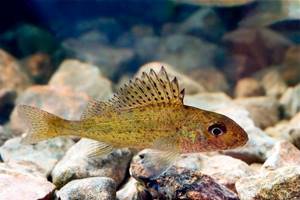
A medium-sized fish of the perch family. The body length rarely exceeds 12 cm, and the weight is 25 g. The color of individuals depends on the body of water in which they live. Residents of rivers and lakes with a sandy bottom have a lighter body color than their relatives inhabiting reservoirs with a muddy bottom. The typical color is a greenish-gray back with dark spots, yellow sides and a whitish belly. Ruffs are common in lakes, along river banks and in dams. The basis of their diet is benthic invertebrates.
Royal Centropyg
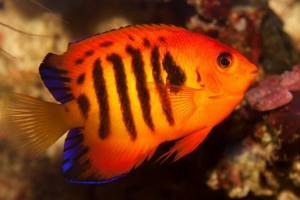
The Royal Centropyge, also called the Fiery Centropyge, combines enviable endurance and bright coloring. It looks more than impressive in aquariums and in general easily adapts to the artificial environment. In nature, Centropygum prefers lagoons with clear water and reef slopes. Inhabits the Central and Western Pacific, less common in Indonesia.
Zander
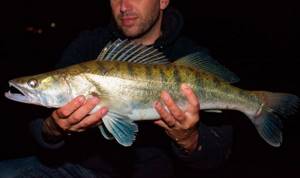
A predator of the perch family that ambushes other fish. Active at any time of the day, capable of hunting even in low light. Its body length can reach 1 m, and its weight often exceeds 10 kg. A distinctive feature of the fish is the presence of large fangs. The body color is usually dark green, with grayish-brown transverse stripes on the sides. At a young age, pike perch lives in a school; as an adult, it prefers solitude.
Fishing for river fish
It is worth noting that fishing on the rivers is varied. The fisherman needs to choose a special way of landing fish, choose the right place and equipment. After all, fishing in one part of the river can be fundamentally different from fishing in another part of the same river.
You also need to know the behavioral characteristics of river fish. So, shy crucian carp does not like noise. It is best to catch it in the morning, or in the evening and on calm days. It is best to choose places for fishing near grassy banks. Bream also loves silence. It is difficult to find in areas with a rocky bottom; it is better to look where there is silt and calm water, and quite deep, since bream loves various ditches and holes.
It's best to catch it in the morning. Large catfish should be looked for in sections of rivers with deep holes and slow flows. Pike, as a rule, prefers one habitat, hiding in holes, guarding its prey. It is best to hunt this predator in spring and autumn. You can tell where the pike is hiding by looking at the accumulation of small fish in the pond - the predator is probably hunting for it.
Pike perch usually stay in schools and can be caught both during the day and at night. Carp loves warm water, and fishing for it can be done in the evening twilight, or in the morning, at dawn. The same applies to silver carp. Perch is perhaps one of the most unpretentious river fish: fishing for it can be organized in any, even bad, weather. He is not very shy, but does not like daylight, preferring shaded areas, mainly at the bottom. The only caveat is that you should not fish for perch at night - at this time of day he sleeps.
Pike
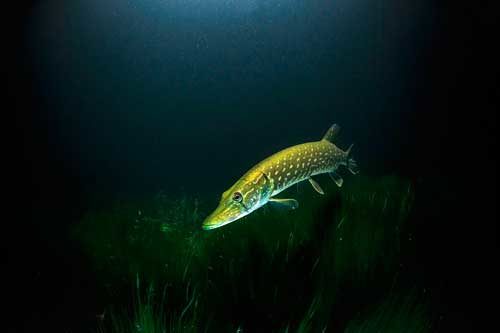
A predatory fish from the pike family, common in freshwater streams, rivers, lakes, and reservoirs in Eurasia and North America. It prefers to stay in thickets of aquatic plants, where it waits motionless for potential prey. The pike has an elongated body and a relatively large head with a wide mouth. The color depends on the habitat and varies from gray-green to gray-yellowish or gray-brown, with a darker back and large olive spots forming transverse stripes on the sides. The average length is 40-55 cm, the average weight is 1-8 kg. Maximum length up to 150 cm, weight up to 35 kg.
Carp, aka common carp

A large omnivorous fish of the carp family, preferring to settle in calm, standing waters with a hard clay bottom. The length of her body in rare cases reaches 1 m, and her weight exceeds 20 kg. The body of the fish is thick, elongated, the head is large, and there are 2 pairs of short whiskers on the upper lip. The color of the scales varies depending on the environment, usually the back is dark, the sides are golden.
Fishes of Lake Baikal
In terms of the number of fish species, Baikal is not inferior to Lake Ladoga. The Holy Sea is also home to about 60 species. They are divided into 15 families and 5 orders. More than half of them are Baikal species not found in other bodies of water. Among them:
Omul
Refers to whitefish. The omul salmon family. The fish reaches 50 centimeters in length. The weight is about 3 kilograms. Even 50 years ago, there were individuals 60 centimeters long and weighing more than 3 kilos. Over the years, the omul not only becomes smaller, but also dies out. The population decline is associated with active fishing. In this regard, a restriction on fishing for endemic species has been introduced in the Baikal regions.
Fish living in the lake are divided into 5 populations. The largest and most delicious omul is the Northern Baikal one. There are also Posolskaya, Selenginskaya, Barguzinskaya and Chivyrkuiskaya populations. Named after their locations in Lake Baikal. It has Barnuzinsky and Chevyrkuisky bays. Posolsk and Selenginsk are settlements on the shore of the lake.
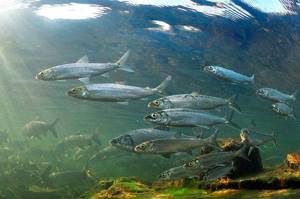
Golomyanka
The only viviparous fish in Lake Baikal. Refusal to spawn is not typical for northern latitudes. Most viviparous fish live in the tropics. Golomyanka also stands out for its transparency. The animal's bloodstream and skeleton are visible through the skin.
Having formed in Baikal 2,000,000 years ago, the golomyanka formed two species. The large one reaches 22 centimeters in length. Small golomyanka is a 14-centimeter fish found in the lake .
The name of the golomyanka is associated with the size of its head. It accounts for a quarter of the body area. The huge mouth is filled with small and sharp teeth. They help to successfully hunt crustaceans and fry.
40% of the golomyanka mass is fat. It provides the fish with neutral buoyancy. The fish literally floats in vertical or inclined planes.
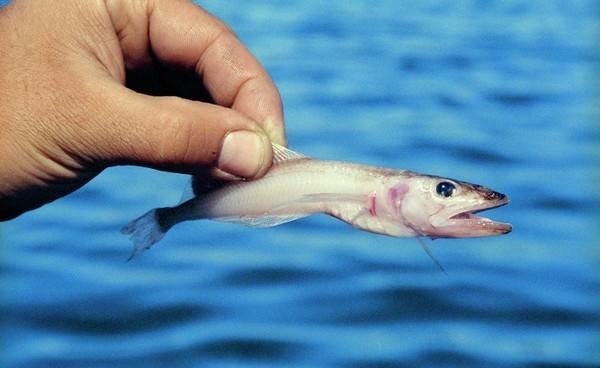
Golomyanka is considered one of the fattest fish
Deep carp
It lives at depths of up to 1,500 meters. The fish has a large head with a wide forehead and a soft, gelatinous body. There are 24 species in the family. Representatives of the largest reach a length of 28 centimeters. The miniature broad carp procottius does not grow to 7.
In general, there are 29 species of gobies in Baikal. Only 22 of them are endemic to the lake. The total number of unique Baikal fish species is 27.
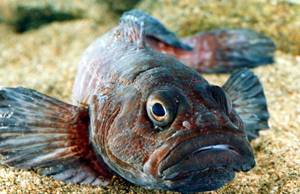
The sizes of broad carp vary from small to large individuals, depending on the species
Ide

An omnivorous fish that lives both in fresh rivers, lakes and ponds, and in sea bays with brackish water. Belongs to the Carp family. The largest representatives of the species grow up to 90 cm in length, their weight reaches 7-8 kg. The average size of adult individuals is: body length - about half a meter, weight - up to 2.8-3 kg. The color of the ide is blue-black on the back and whitish on the sides, the belly is silvery, and in the spring a metallic sheen appears.
Bream
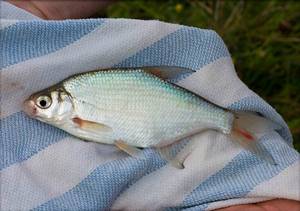
A very cautious fish from the carp family, living in places with abundant vegetation. The basis of its diet consists of insect larvae, mollusks, worms and algae. The body length of the largest specimens reaches 82 cm, weight - 6 kg. The main background of the body of an adult fish is gray-brownish, the fins along the edges are almost black. Juveniles are silvery.
6. Clownfish
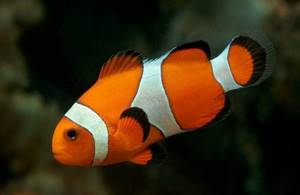
Another reference to the cartoon Finding Nemo: the clown fish is the prototype of one of the main characters. Many consider this fish to be the most striking inhabitant of the deep sea - its bright orange color and contrasting white vertical stripes cannot help but catch the eye. Fun fact: all clownfish are born male, and an individual can change sex throughout its life.
Roach
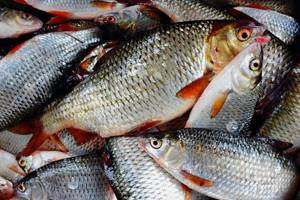
A schooling fish of the carp family. Body length can reach half a meter, weight in rare cases reaches 2.5 kg. The color of most representatives of this species is silver on the sides and belly, and almost black on the back, with a green or bluish tint. There are also golden-colored specimens. Roaches feed on mollusks, invertebrates and algae; large individuals do not reject fish larvae and fry.
Surgeon Blue Royal
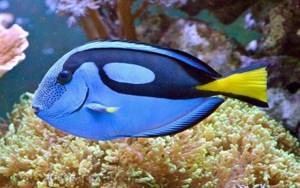
We all remember and love the cartoon “Finding Nemo”. It was after its release that this type of fish became so popular. A character named Dory was a blue royal surgeon. This fish is also famous for its bright color: a striking combination of blue-violet and bright yellow. “Surgeons” prefer to hide in the crevices of sea reefs, where they hide from predators and also find food in the form of algae.
Golden carp
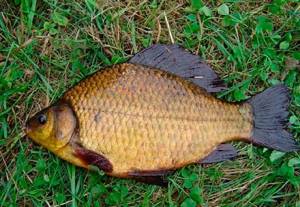
Fish of the carp family, up to 36 cm long. Body weight usually does not exceed 1.5 kg. The color on the sides and belly is golden or copper-yellowish, on the back it is dark, greenish-brown. Crucian carp is a schooling species. It lives in places with abundant vegetation and muddy bottoms, trying not to swim into open areas. It feeds on worms, mollusks, insect larvae and plants. Able to withstand brackish waters, it is also resistant to oxygen deficiency and changes in water temperature.
River predators
Predatory individuals feed on other fish, some can eat animals or birds. Largemouth species swallow so much prey at one time that it is enough for several days of active life, but smallmouth fish need to hunt constantly, since their prey is small.
Predatory and resourceful pike
The most common predatory river fish in Russian waters. The maximum size of pike reaches up to 1.5 m with a weight of up to 30-35 kg, but specimens are known weighing up to 60 kg and longer than human height. The average life expectancy is up to 25 years, although there are individuals with a maximum age of 35 years.
The fish is very strong, tireless and agile thanks to its slippery cylindrical body . It is shaped like an underwater torpedo with a long, flattened head and a huge mouth filled with many sharp teeth.
Pike is so predatory that sometimes it even attacks its own relatives. True, it prefers carp fish for food: crucian carp, bleak, roach, rudd. But he treats spiny species (perch, ruff) with great caution; even if he catches such a fish, he does not immediately swallow it, but holds it in his mouth until it stops moving. During the hunt, it misses very rarely, but if attempts are unsuccessful, it returns to ambush and awaits other prey.
The spotted body color of the pike allows it to camouflage perfectly among the vegetation of the reservoir. In rivers it lives in places that are not very deep, with weak currents and grassy banks.
Pike meat contains little fat and is therefore considered dietary . It contains a lot of protein, which is easily absorbed by the human body.
spiny perch
This predatory fish, like pike, is widespread in the waters of Russia and almost all European countries. It has a laterally compressed body, which has a peculiar hump with dark stripes. The tail fin and eyes are highlighted with an orange tint. The color of the perch depends entirely on the transparency of the water. Individuals living in a dark environment with a muddy bottom have a more saturated color than fish living in light water.
The fish is quite large in size; there is evidence that perch can reach a weight of up to five kilograms and a length of up to half a meter. The average life expectancy is about 17 years.
In terms of extraordinary gluttony and predatory greed, it is not inferior to the pike. Having swallowed one fish, it can immediately continue hunting for another. There are cases when a caught perch had several fry in its stomach. It feeds on any fish of suitable size, and is active both in summer and winter.
Prefers to stay at depth, but not at the very bottom . During a hunt, it easily lunges at prey located in the upper layers of the reservoir.
The largest predator is catfish
This is the largest fish living in rivers. Its body length can reach five meters, and its weight can be over 300 kg. According to scientists, such specimens are 80-100 years old. In most cases, the color is brown with a brownish-green tint, and the belly is white. The color change can be almost light yellow depending on where it lives.
Catfish are considered an active nocturnal predator, which during the day prefers to lie down in snags or holes.
The diet of this large predator is very varied. Easily eats frogs, shellfish or large fish. Sometimes geese, ducks, water rats and other animals and birds can end up in the mouth of a catfish.
The meat of this inhabitant of the river depths contains some bones and fat. It is very nutritious and beneficial for the human body.
River delicacy - pike perch
A predator reaching a length of up to one meter and a weight of up to 10 kg. Pike perch can be found in the clear water of large rivers and lakes. Life expectancy is up to 15 years. It is a relative of the perch and has the same vertical stripes on both sides.
An adult tries to stay near stones at depth or in holes, but young animals, on the contrary, prefer shallow sections of rivers . At the beginning of life, the fry primarily feed on zooplankton, insect larvae and small fish from other fish.
Pike perch actively hunts for prey, while trying to avoid areas with thickets where it itself can become food for pike. However, his location is very unstable. Where pike perch was caught well the day before, you may not find it the next day.
Burbot - a representative of cod
Among freshwater fish, burbot is the only representative of the cod family. It is sharply distinguished from other fish by its unique body shape. The body is strongly elongated and compressed on the sides, especially in the tail. The head is flattened, similar to a catfish. The back is grayish-green in color and has dark stripes and spots, but the belly is whitish.
Burbot is an insatiable and extremely greedy predator whose diet includes insect larvae, frogs, mollusks and small fish . Sometimes, when an adult is opened, a large number of small perches, minnows or ruffs are found in the stomach. Despite its sluggish and lazy appearance, it swims deftly and quickly. At the same time, it is especially active in winter, when other fish are more sleepy and motionless.
Burbot can reach a length of up to one meter and a weight of up to five kilograms, although there are also specimens weighing up to 24 kg. Life expectancy is quite high - up to 22 years.
There are also smaller predatory fish, such as:
- Bersh is very similar to pike perch, however, it reaches a size of up to 50 cm.
- Chop - found less frequently, in the Danube or Dnieper rivers.
- Ruff is a widespread fish, often called thorn by fishermen, because it has sharp, spiny fins.
Common catfish
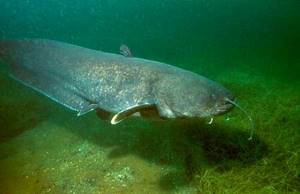
Photo: Dieter Florian/Wikimedia Commons
A large fish of the catfish family, growing up to 2.5 m in length. The body weight of the most well-fed individuals reaches 100-150 kg. There are no scales on the body of the catfish. The color on the back and sides is usually brownish-brownish, with a greenish tint, and the belly is white. Albinos are sometimes found. Catfish feed on fish, shellfish and other freshwater animals, and can attack birds. Hunts at night.
Burbot
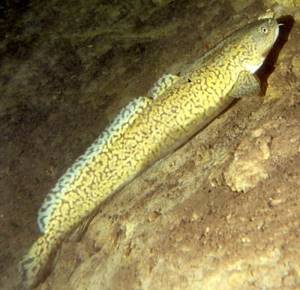
Photo: Achim R. Schloeffel/Wikimedia Commons
The only representative of the cod family that lives only in fresh water. Its body length reaches 1.2 m, weight reaches 18 kg. The color of individuals living in different bodies of water can vary greatly; the most common option is a dark brown or grayish-black background, with large light spots on the sides and unpaired fins. The paired fins and belly are usually light in color. Burbot feeds on small fish, invertebrates, frogs, crayfish and mollusks, and does not disdain decaying animals. Found in rivers that flow into the Arctic Ocean.
Freshwater river fish and migratory fish

River fish cannot exist in salty sea water, and sea fish cannot exist in fresh water. With some exceptions: migratory fish can live in both fresh and salt water.
Some marine fish migrate to rivers for spawning - salmon, brown trout, and herring. These types of fish are called anadromous. Salmon go upstream in rivers hundreds of kilometers from where they flow into the sea, spawn there, roll back, and die. Migratory fish have great commercial value.
Freshwater river fish are also not always sedentary, and can migrate to salty waters. Some species of freshwater fish (catadromes) swim into the sea to spawn (freshwater eels).
The typical river fish is underrated. No sea fish can compare in taste to properly cooked pike perch, fried carp or crucian carp. Real fish soup is made only from river fish, and the most delicious fish cutlets are made from pike meat. Pike caviar is also prized. And in general, among the river fish, there are really valuable fish!
Smelt
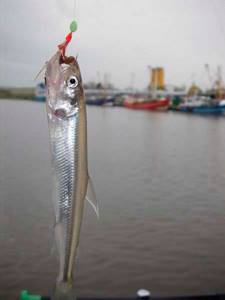
Small schooling fish that smells like fresh cucumbers. It is a lake form of the European smelt. It grows no more than 18 cm in length, weighs up to 8 g. Its elongated body is covered with large scales, which can fall off. The mouth has strong teeth. The sides of the smelt are silvery, the back is usually dark with a grayish-green tint, and the belly is light. The diet is based on small crustaceans.
Mikizha
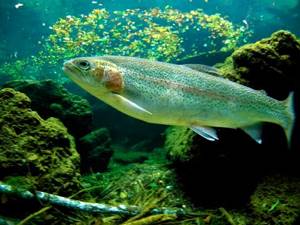
The more famous name for this fish is rainbow trout. Belongs to the salmon family. Its homeland is North America, but it has taken root in many countries of the world without any problems. Mykiss is found in clean and clear cold waters and is often grown for industrial purposes. The body color of the fish is greenish on the back and gray-white on the belly. The body length of individuals living in natural reservoirs reaches 50 cm, weight - up to 1.6 kg. Trout growing in ponds and feeding on artificial feed can eat up to 8 kg. In its natural environment, mykiss prey on other fish, bird chicks, rodents, frogs, insects and mollusks.
